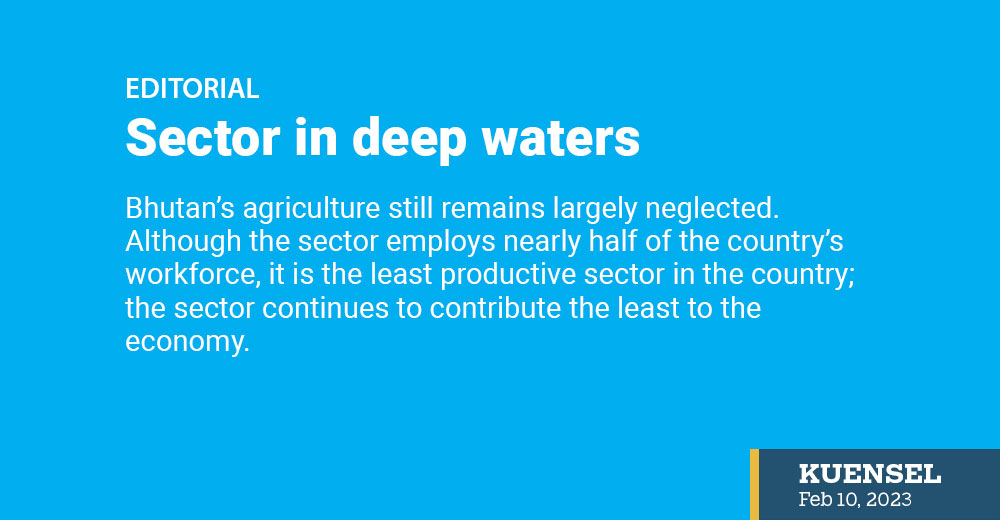Bhutan’s agriculture still remains largely neglected. Although the sector employs nearly half of the country’s workforce, it is the least productive sector in the country; the sector continues to contribute the least to the economy.
According to a Royal Monetary Authority report, the agriculture sector employed 158,511 persons, equivalent to 49.2 percent of the total labour force, in 2021. However, the sector contributed only one-fifth or 19.2 percent (Nu 36.04 billion) to the country’s gross domestic product (GDP).
At a time when the country’s food import figures are growing, there is a need to recognise that Bhutan’s agriculture sector has arrived at a critical juncture.
We are not producing enough to feed ourselves; long-term repercussions can be serious.
The sector’s aim is to achieve a GDP growth share of 7 to 8 percent annually from 2024 which, we are told, can be realised with a special focus on growing high-value crops and commercial farming. However, lack of diversity, low technology, and mechanisation, remain a formidable challenge for the sector.
If the right interventions do not come early, ensuring that all Bhutanese are food secure will fly on the face of the Food and Nutrition Security Policy of Bhutan 2022. We need policies, of course, but we must also be able to translate them into reality. We cannot afford further resource waste in the sector.
Human-wildlife conflict is today a major issue facing the farming communities in the country. According to some well-placed reports, our farmers suffer crop loss of about 43 percent due to human-wildlife conflicts.
The prime minister recently said that the government has approved Nu 500 million to construct chain-link fencing across the country. “Following a successful pilot project, about 116.81 kilometres of chain link fencing worth Nu 198.577 million will be constructed in the first phase.”
How this initiative will turn Bhutan’s agriculture sector is yet to be seen. While such measures are necessary, the sector needs innovation. Without innovation and rapid mechanisation, farming stands to lose hands.
The question is: What becomes of our ambitious dreams then?
If there is a fall in both productivity and production, our dependence on food imports will only grow. If the agriculture sector is affected by factors such as human-wildlife conflict, water shortage, rural-urban migration, labour shortage, land fragmentation and climate change, among others, there is a need for a cross-sectoral approach to solving the problem, urgently.


